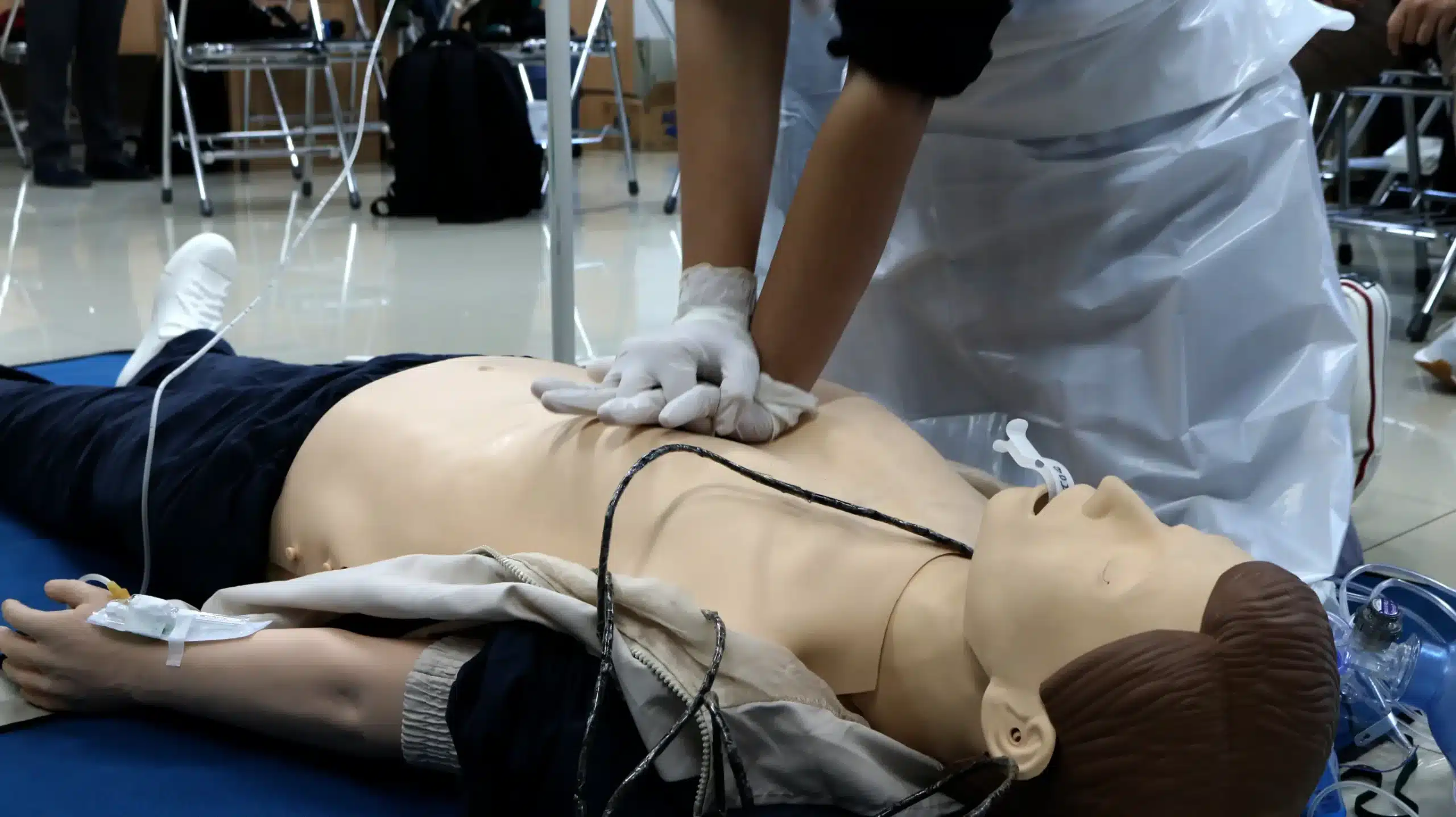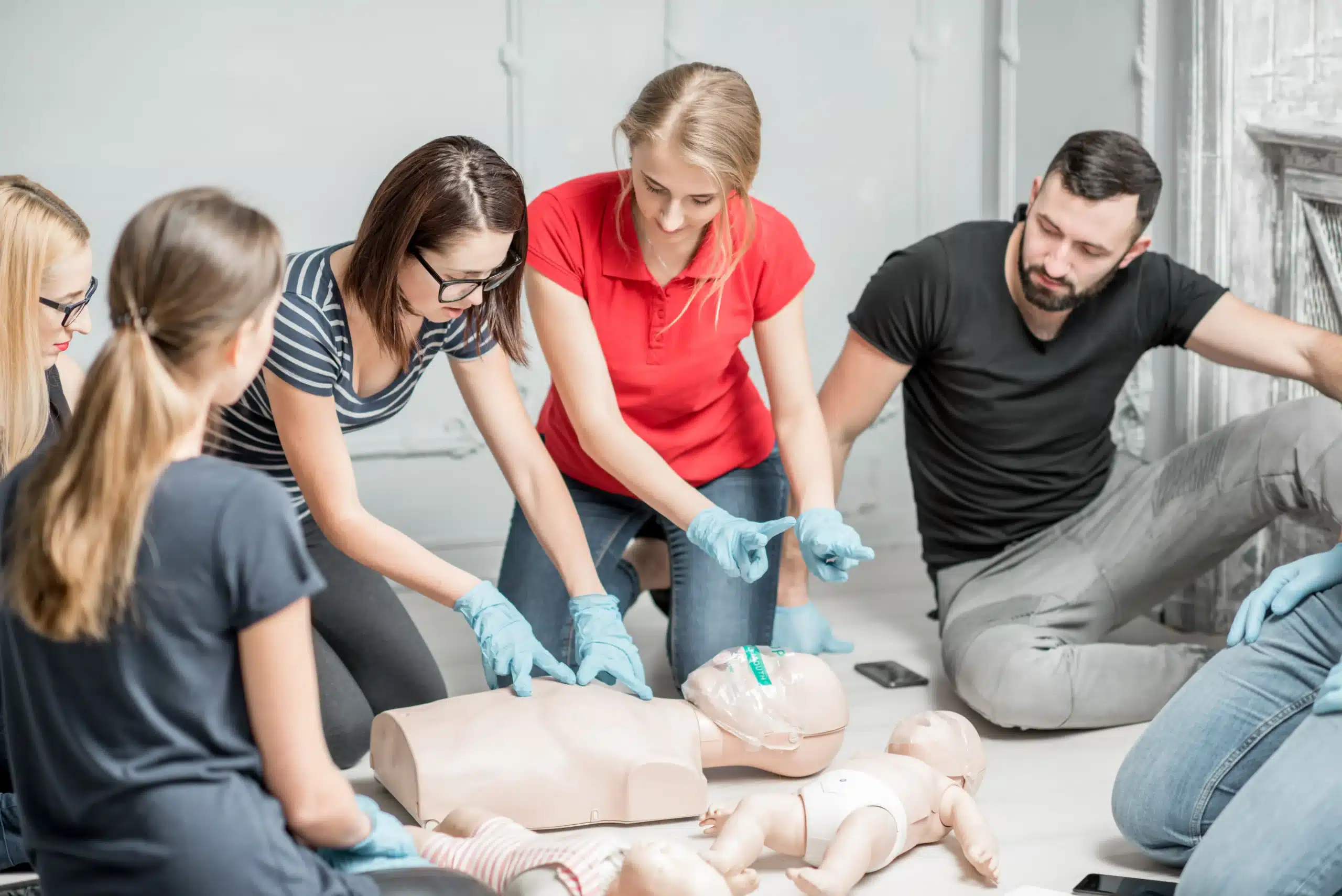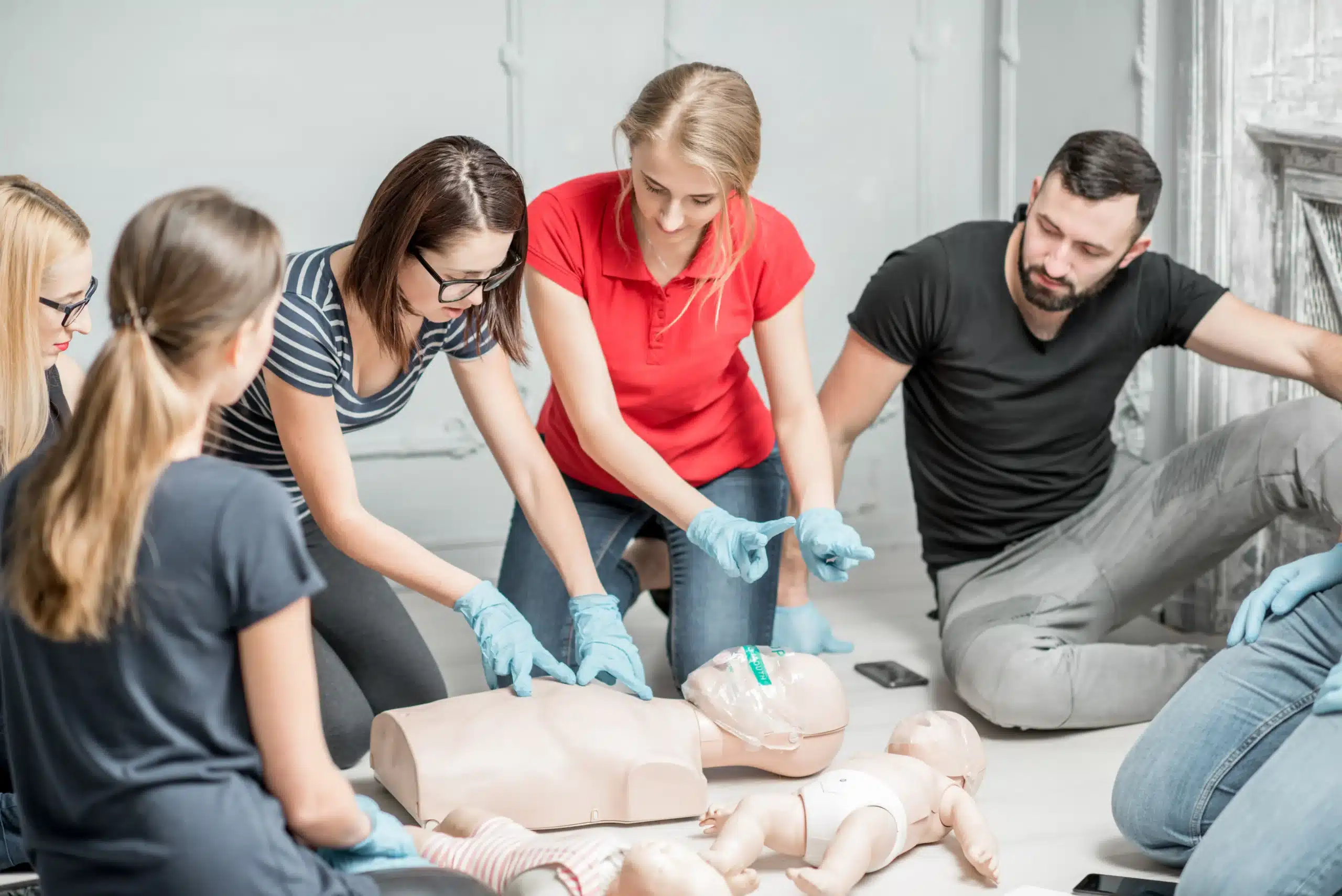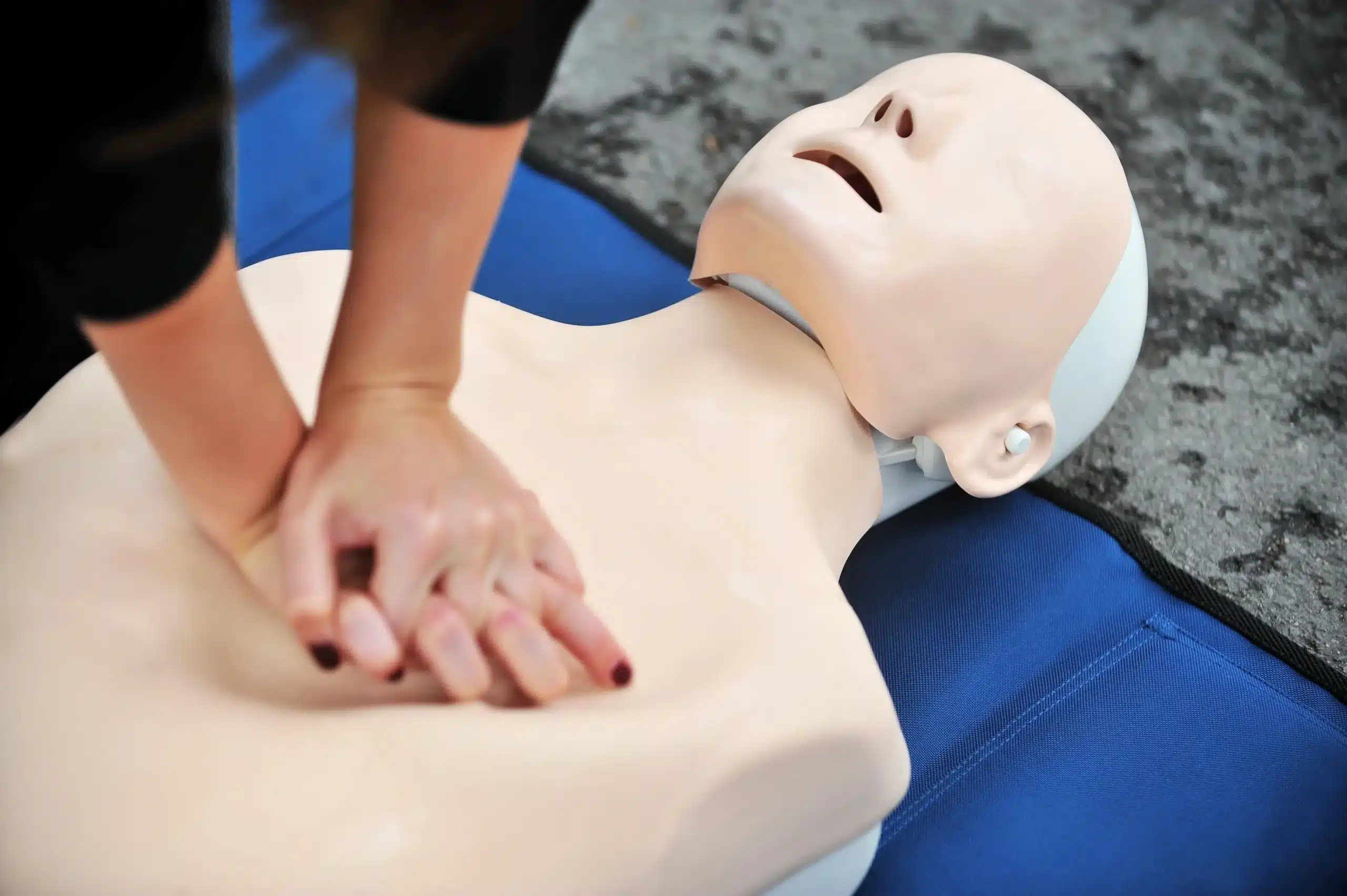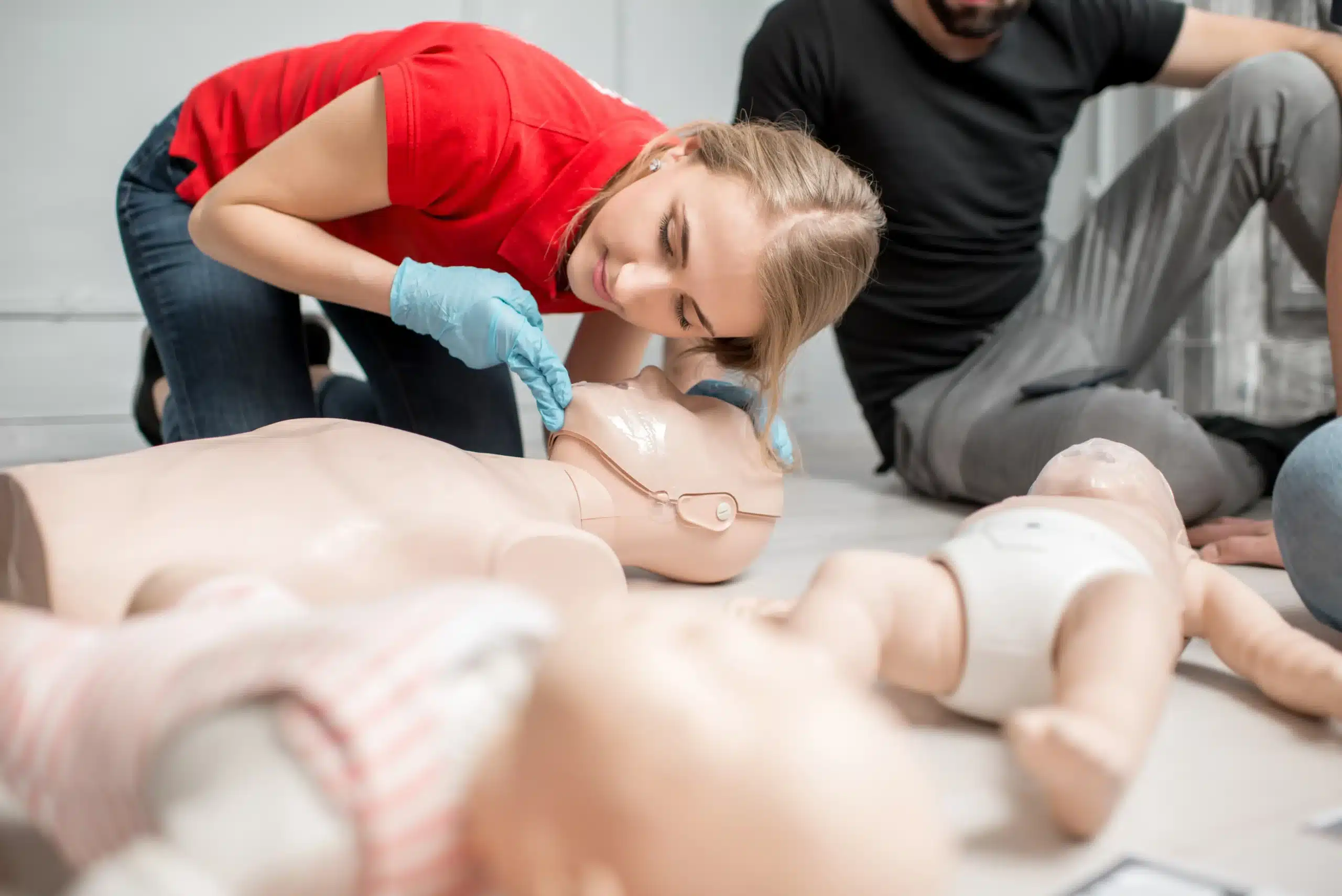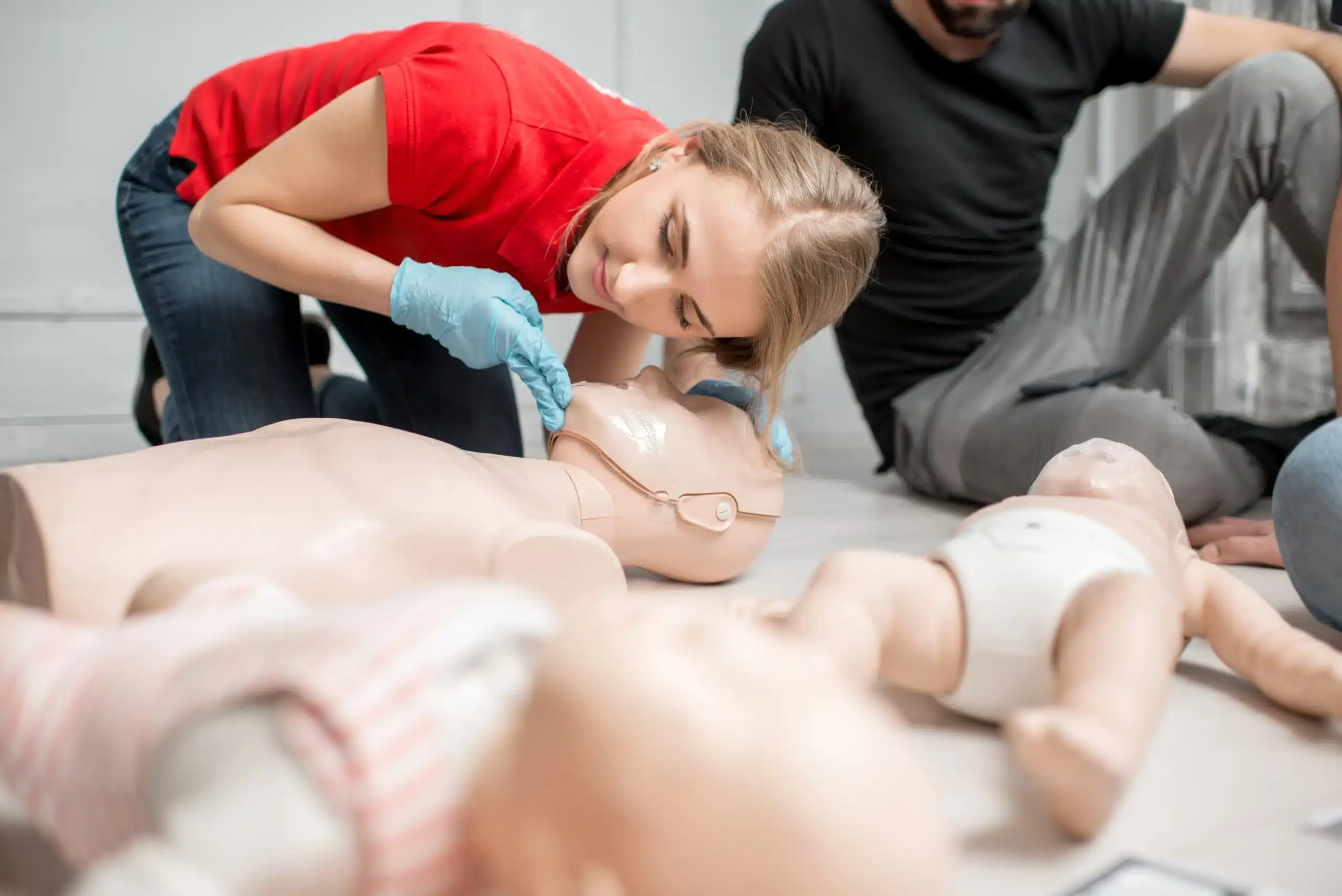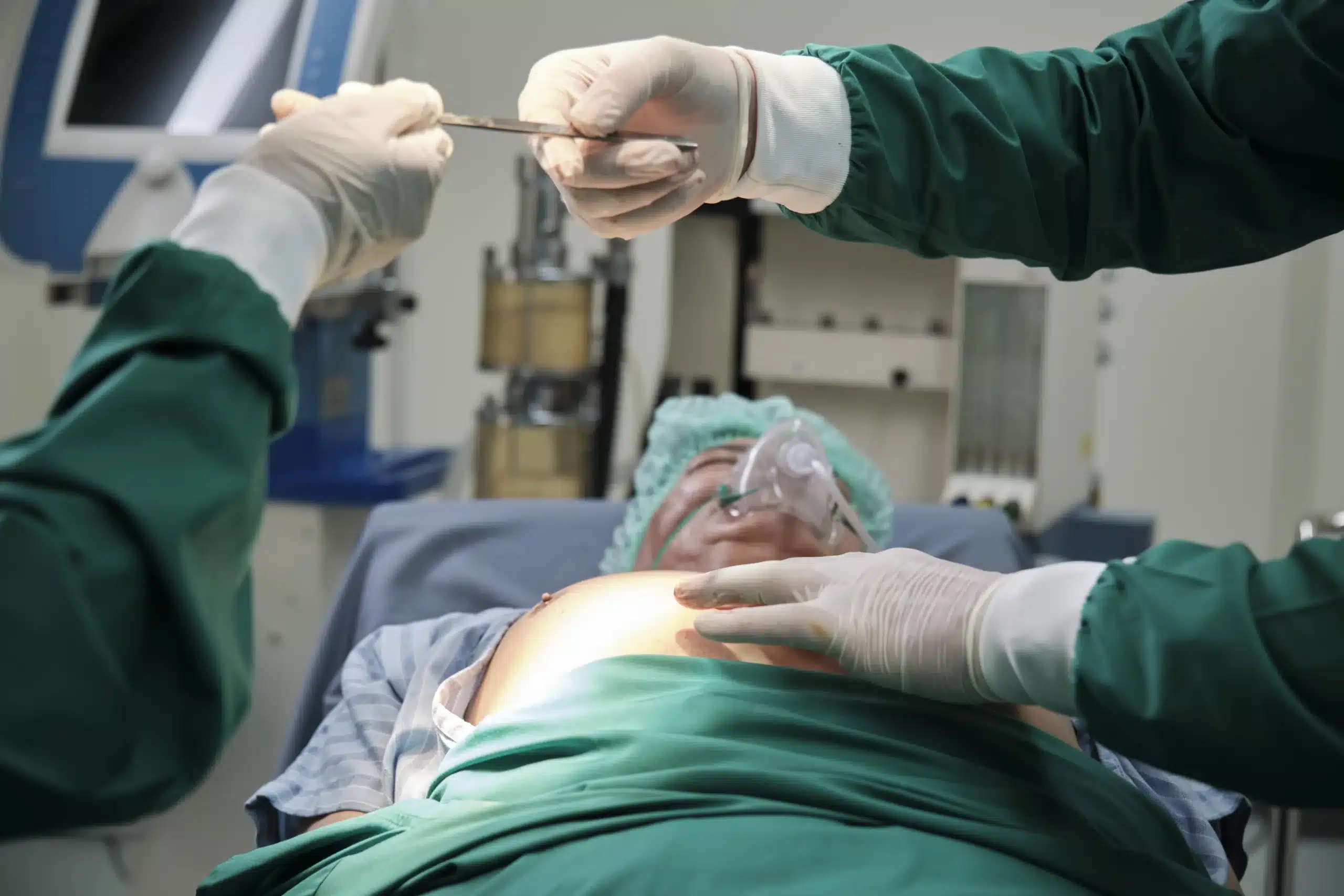Basic Life Support (BLS) training is more than just a good idea—it’s a life skill that can empower you to make a real difference in a crisis. If you’re in Santa Rosa and searching for affordable or free BLS courses in Santa Rosa, this guide is here to help. We’ll explore the various BLS certification options available, including free courses, paid courses, and blended learning formats. We’ll also discuss the importance of BLS skills, what to expect in a BLS course, and how to choose the right training provider for your needs.
Key Takeaways
- BLS skills are essential for everyone: From healthcare providers to everyday people, having BLS training can make a real difference in a medical emergency. Explore different course formats to find one that suits your needs.
- Free courses offer a starting point, paid courses offer certification: Consider a free course for an introduction to BLS, but if you need certification for your job, a paid course with hands-on training is essential.
- Maintain your skills: BLS best practices change, so renewing your certification every two years is crucial for staying up-to-date and prepared to respond effectively.
What is BLS & Why is it Important?
Basic Life Support (BLS) is a crucial set of life-saving skills and protocols used in critical situations like cardiac arrest and respiratory distress. It empowers healthcare providers, first responders, and everyday people with the knowledge to respond effectively during emergencies. Think of it as the foundation for providing immediate care to someone whose breathing or heart has stopped. BLS covers essential techniques like CPR, using an Automated External Defibrillator (AED), and providing first aid. These skills can help sustain life until professional medical help arrives. Learning BLS can truly make a difference, potentially saving a life by buying precious time in those critical moments.
BLS certification courses, like those offered by the American Heart Association, teach you how to recognize life-threatening emergencies and provide immediate care for adults, children, and infants. It’s more than just chest compressions—it’s about understanding how to assess a situation, perform rescue breaths, and ensure the patient’s airway is clear. These skills are vital for anyone working in healthcare, but they’re also incredibly valuable for anyone who wants to be prepared to help in a crisis. Regularly updating your BLS certification ensures you’re always familiar with the latest guidelines and techniques, giving you the confidence to act quickly and effectively when it matters most. You can learn more about the importance of maintaining your certification from resources like CPR Certification Now.
Free BLS Courses in Santa Rosa
Finding the right BLS course can feel overwhelming, so I’ve compiled some resources available in Santa Rosa. While free courses are a great option, they might not always be available or meet your specific needs. Sometimes, investing in a paid course offers benefits like greater flexibility and in-person instruction. For those seeking other certifications, CPR and First Aid classes are also readily available.
American Red Cross
The American Red Cross offers BLS certification and renewal training designed for healthcare providers and first responders. This training is essential for enhancing lifesaving skills in emergencies. While the Red Cross is a trusted resource, their BLS courses typically come with a fee. Check their website for the latest course schedules and pricing.
National Health Care Provider Solutions (NHCPS)
NHCPS partners with the Disque Foundation to provide a completely free online BLS course. This is a fantastic option for obtaining or renewing your BLS certification. You’ll need to score 80% or higher on the certification exam to pass.
Santa Rosa Community Health
While Santa Rosa Community Health may offer BLS training or resources, details on free courses weren’t readily available during my research. I recommend checking their official website or contacting them directly for up-to-date information on any BLS programs.
Safety Training Seminars
Safety Training Seminars offers various certifications, including BLS, ACLS, PALS, NRP, and CPR. Certifications are valid for two years, and courses are available daily, including weekends. They offer in-person training at their Santa Rosa location and convenient on-site training for companies. See their website for details and information on discounts, like their group discounts.
BLS Course Requirements & Prerequisites
Before signing up for a Basic Life Support (BLS) class, it’s helpful to understand the requirements and any prerequisites. Knowing what to expect will help you feel prepared and confident going into the course. Let’s break down the typical requirements you might encounter.
Age Restrictions
Generally, there isn’t a strict age limit for BLS certification. The American Red Cross BLS courses are designed for healthcare providers and public safety professionals, but the skills are valuable for anyone who wants to learn life-saving techniques. So, while the course content focuses on professional rescuers, people of all ages can participate and benefit from the training. If you’re unsure, it’s always best to contact your chosen training provider, like Safety Training Seminars, to discuss any age-related concerns.
Prior Knowledge & Experience
While prior medical experience isn’t strictly required for BLS certification, some courses are designed for healthcare providers who regularly use resuscitation skills. For example, the American Red Cross BLS course covers advanced topics like scene safety and legal considerations, which might be more challenging for someone with no healthcare background. However, many BLS courses welcome participants with no prior experience. These courses often use a blended learning format, combining online modules with in-person skills sessions. The online portion usually needs to be completed before attending the hands-on training. This approach allows you to learn the basics at your own pace and then practice the skills with a certified instructor. Check with your chosen provider to see if their BLS course requires any prior knowledge or experience.
BLS Course Formats & Structure
Choosing the right BLS course format depends on your learning style and schedule. Let’s break down the most common options available in Santa Rosa: online, in-person, and blended learning.
Online Learning
Online BLS courses offer flexibility for those with busy schedules or who prefer self-paced learning. You can study the material anytime, anywhere, from your computer or phone. Some providers, like NHCPS, offer free online BLS courses covering essential skills like CPR, AED use, and choking relief for adults, children, and infants. Keep in mind that online-only courses typically don’t include the hands-on practice required for certification. For some, this format may be a good way to refresh knowledge, but not sufficient for initial certification.
In-Person Training
In-person BLS training provides a structured learning environment with direct interaction with an instructor. These courses often follow a blended learning format, meaning you’ll complete an online portion before attending the in-person skills session. This approach ensures you’re familiar with the material before practicing techniques like chest compressions and rescue breaths. The hands-on component with an instructor is essential for proper feedback and demonstrating competency. The American Red Cross offers in-person BLS training in Santa Rosa.
Blended Learning
Blended learning combines online learning with in-person training. You’ll work through online modules at your own pace and then attend an in-person session to demonstrate your skills and receive feedback from a certified instructor. The Red Cross offers this blended learning approach for BLS certification in Santa Rosa. This format is ideal for those who want flexibility with their study schedule but also value hands-on instruction. It’s a popular choice for many seeking initial certification or recertification.
BLS Certification & Validity
BLS certification is essential for anyone working in healthcare or regularly interacting with children. It’s also a smart idea for anyone who wants to be prepared for an emergency. This section covers the different types of BLS certifications, how long they’re valid, and how to renew them.
Types of BLS Certifications
Basic Life Support (BLS) certification gives you the skills to respond to cardiac and breathing emergencies. While the core skills are similar across different BLS certifications, some courses may offer specialized modules like pediatric BLS for healthcare providers working with infants and children. Safety Training Seminars offers BLS certification courses through the American Heart Association, ensuring you receive high-quality training that meets industry standards. We also offer ACLS courses for advanced life support training.
Certification Duration & Recognition
BLS certification typically lasts for two years. This timeframe is designed to keep your skills and knowledge aligned with evolving medical practices. Medical standards and best practices are constantly being updated, and renewing your certification ensures you’re always prepared to provide effective care. Consider our convenient and affordable RQI classes to maintain your skills between renewals.
Renewing Your Certification
Renewing your BLS certification is straightforward. You’ll need to take a BLS renewal course before your current certification expires. This refresher course covers the latest guidelines and techniques to keep you up-to-date. Letting your certification lapse can have professional consequences. Without a current BLS certification, you might not be authorized to perform CPR or use an AED in a professional setting. Maintaining your certification demonstrates your commitment to providing high-quality care and keeps you prepared for emergencies. Safety Training Seminars offers convenient and affordable renewal courses to help you stay certified. Check out our low price guarantee and group discounts to make renewing even more accessible.
Free vs. Paid BLS Courses
Choosing between a free and paid BLS course often comes down to your specific needs and goals. Both have their place, and understanding the advantages of each can help you make the right decision.
Advantages of Free Courses
Free BLS courses offer a fantastic entry point for those curious about basic life support or looking to refresh their knowledge. Several reputable organizations, like the National Health Care Provider Solutions (NHCPS), offer free online BLS training covering essential skills and the latest guidelines. These courses can be incredibly valuable resources for individuals, community groups, or even those considering a career in healthcare. Free online courses, like those available through Alison, often explain how to provide basic life support for people of all ages, making them a flexible learning option. Plus, some providers offer free courses covering both adult and pediatric emergency care. This breadth of knowledge can be especially useful for parents, caregivers, or anyone who wants to be prepared for a range of emergencies.
When to Pay for a Course
While free courses offer valuable information, investing in a paid BLS course is sometimes necessary. The key difference often lies in certification. Many free courses provide training but don’t offer official certification. If you need BLS certification for your job, a paid course is the way to go. This is also true if you need recertification, as free courses typically don’t cover the requirements for renewal. Paid courses often include hands-on training and skills assessment with an instructor, which is crucial for mastering BLS techniques and receiving your American Heart Association certification. Safety Training Seminars offers a low price guarantee on paid BLS courses, including BLS for healthcare providers and other certifications like ACLS, ensuring you receive high-quality training at a competitive price. Maintaining a current BLS certification is essential for anyone working in healthcare, as it authorizes you to perform CPR and use an AED in emergencies. A paid course ensures you have the most up-to-date skills and credentials to provide effective care.
Prepare for Your Free BLS Course
So, you’ve decided to take a free BLS course—fantastic! Now, let’s make sure you’re set up for success. A little prep work goes a long way.
Study Materials & Resources
Even for a free course, using available study materials is key. The American Red Cross, for example, offers resources for their BLS courses covering essential skills like CPR, AED use, and first aid. Many courses, including those from the Red Cross, use a blended learning format. This means you’ll complete online coursework before attending an in-person skills session. Reviewing these materials beforehand will make you feel more confident during the hands-on portion.
Time Management Tips
Free courses often have specific requirements, like completing online modules before your in-person training. Set aside enough time to work through the online materials—don’t wait until the last minute! If you’re renewing your BLS certification, look for a renewal course designed for a quicker refresher. Knowing how long your BLS certification is valid and planning ahead will help you stay current without any last-minute stress. A little planning makes the whole process smoother.
Get the Most Out of BLS Training
Getting your BLS certification is a fantastic accomplishment, but it’s just the beginning. To truly maximize your training, focus on consistent practice and consider how these vital skills translate to real-world scenarios. At Safety Training Seminars, we equip our students with the knowledge and hands-on practice they need to feel confident in any situation. We encourage you to explore our discount group class options for an even more enriching experience.
Practice Techniques
Regular practice is key to maintaining proficiency in BLS techniques. Think of it like any other skill—the more you use it, the more ingrained it becomes. Hands-on practice allows you to refine your technique, build muscle memory, and develop the confidence to act quickly and efficiently under pressure. Our courses at Safety Training Seminars cover a wide range of topics—CPR, First Aid, AED usage, scene safety and assessment, critical thinking, problem-solving, communication, and teamwork. We encourage you to seize every opportunity to practice, whether it’s with fellow classmates, family members, or even using online resources and training videos. The American Red Cross also offers valuable resources and information on BLS training. For those looking to refresh their skills, our RQI classes provide a flexible and convenient way to stay current.
Using BLS Skills in Real Life
BLS training isn’t just about checking a box; it’s about empowering you to make a real difference. These skills can be applied in countless situations, from a medical emergency at home or in public to assisting a coworker or stranger. Understanding how your BLS training equips you to respond effectively is crucial. MyCPR NOW offers insights into the importance of BLS certification and its impact on patient outcomes. Remember, maintaining an up-to-date certification is essential. Resources like the Health Sciences Forum offer information on how long your certification is valid and how to renew it. By staying current with your BLS skills, you’re not only prepared for emergencies but also contributing to a safer community. And with our low price guarantee, you can be confident you’re getting the best value for your training.
After BLS Certification: What’s Next?
So, you’ve earned your BLS certification—congratulations! This is a fantastic achievement, and you should be proud. But your journey doesn’t end here. BLS is a dynamic field, and maintaining your skills is crucial for providing effective care. This section explores what steps you can take after becoming BLS certified, focusing on continuing education and potential healthcare career paths.
Continuing Education
Your BLS certification isn’t a one-and-done deal. It’s designed to ensure you’re always equipped with the most current knowledge and techniques in life support. Since medical standards and best practices evolve, BLS certification expires every two years. This means you’ll need to renew your certification regularly to stay current. Think of it like a driver’s license—you need to refresh your knowledge and skills periodically. Recertification involves completing a BLS renewal course, which covers any updates to guidelines and reinforces essential skills. Staying current with your BLS certification demonstrates your commitment to providing high-quality care and ensures you’re prepared to respond effectively in emergencies.
Healthcare Career Paths
BLS certification is a foundational step for many healthcare professions. It equips you with the essential skills to respond to medical emergencies and provide immediate care, ultimately improving patient outcomes. These skills, including CPR, first aid, and AED operation, are critical in sustaining life until professional medical help arrives. Whether you’re a medical student, aspiring healthcare professional, or already working in the field, maintaining a current BLS certification is often a requirement. In fact, without it, you might not be authorized to perform CPR or use an AED in a crisis. BLS certification can open doors to various healthcare roles, from entry-level positions to more specialized fields. It’s a valuable asset for nurses, doctors, paramedics, certified nursing assistants, and other healthcare providers. Even if a healthcare career isn’t your goal, BLS training is a valuable life skill that can empower you to assist others in need. Consider our BLS courses in Santa Rosa for comprehensive and convenient training.
Choose the Right Free BLS Course
Finding the right BLS course, even a free one, requires some careful thought. It’s not a one-size-fits-all situation, so consider what you need to get out of the training.
Factors to Consider
- Course Format and Accessibility: Think about your learning style and schedule. Do you prefer online learning, in-person classes, or a blended learning format? The American Red Cross, for example, offers blended learning for BLS, allowing you to complete the online portion at your own pace before attending an instructor-led session. Make sure the course format fits your lifestyle. If you need mobile access, confirm the course is optimized for phones and tablets.
- Certification Validity: BLS certification typically expires after two years, requiring recertification to stay current with evolving medical standards. This is crucial for ensuring your skills are up-to-date and recognized. Factor this into your decision, especially if you need certification for a job.
- Content Coverage: A good BLS course should cover essential life-saving techniques like CPR, First Aid, and AED use. Look for courses that also address crucial skills like scene safety, patient assessment, communication, and teamwork. The American Red Cross BLS courses often include these broader topics, making them a well-rounded option.
Questions to Ask Providers
Even free courses vary in quality. Don’t hesitate to ask potential providers some key questions:
- Instructor Qualifications: A qualified instructor can make all the difference in your learning experience. Check if instructors are certified by a reputable organization like the American Heart Association. Reviews from past participants can offer valuable insights into the instructor’s teaching style and expertise.
- Course Completion Requirements: What do you need to do to successfully complete the course and receive certification? Some free courses may have specific requirements, like achieving a minimum passing score on exams or demonstrating proficiency in practical skills. Save A Life offers a free online BLS course that requires an 80% score to pass the certification exam. Clarify these requirements upfront.
- Feedback from Past Participants: Reading testimonials from previous students can give you a feel for the course’s strengths and weaknesses. Look for comments on the instructor’s effectiveness, the quality of the materials, and the overall learning environment. Testimonials can often provide a candid perspective on the course experience. If a provider doesn’t readily share feedback, consider it a red flag.
Related Articles
- BLS Certification Near Me: Your Complete Guide – Santa Rosa CPR Classes
- BLS Classes in Santa Rosa: Your Complete Guide – Santa Rosa CPR Classes
- BLS Renewal Near Me: How to Choose & What to Expect – Santa Rosa CPR Classes
- BLS Certification in Santa Rosa: Find the Right Course – Santa Rosa CPR Classes
- BLS HeartCode Santa Rosa: Your Certification Guide – Santa Rosa CPR Classes
Frequently Asked Questions
Is BLS certification required for all healthcare professionals?
While not universally mandated, BLS certification is often a prerequisite for many healthcare roles and essential for providing safe and effective patient care. Even if not strictly required, it demonstrates a commitment to preparedness and high-quality care. It’s always best to check with your employer or licensing board for specific requirements in your field.
What’s the difference between BLS and CPR certification?
BLS encompasses CPR but covers a broader range of skills, including using an AED and relieving choking. Think of CPR as one component within the larger framework of BLS. BLS certification provides a more comprehensive skill set for responding to medical emergencies.
How can I find free or low-cost BLS courses in Santa Rosa?
Several organizations offer free or discounted BLS courses, including online options and those tailored for specific groups. Research local community centers, healthcare providers, and organizations like the American Red Cross for potential opportunities. Don’t hesitate to contact Safety Training Seminars directly to inquire about our affordable options and discounts.
What if I let my BLS certification expire?
Allowing your BLS certification to lapse can limit your ability to respond to emergencies in professional settings and may have licensing implications. Renewing your certification before it expires ensures you’re always prepared and compliant with industry standards.
How can I practice my BLS skills outside of a formal course?
Regular practice is key to maintaining proficiency. Consider joining refresher courses, practicing with friends or family, or using online resources and training videos to reinforce your skills and stay up-to-date with the latest guidelines.
